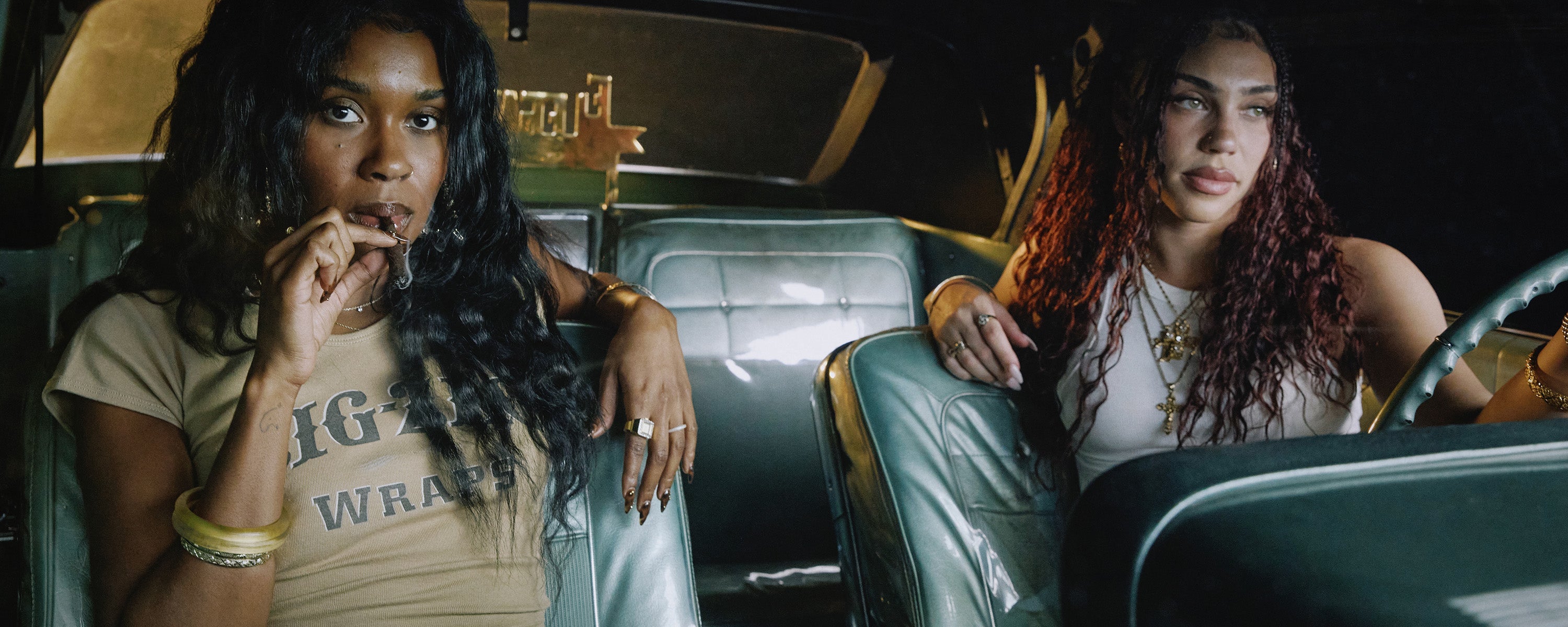The Evolution of Cigar Wraps: How Preferences Have Shifted
The cigar wrap industry has undergone significant changes over the years, driven largely by evolving consumer tastes and market demands. Historically, tobacco wraps were simple, functional components used to bind the cigar's contents securely. However, as smoking evolved into a more refined leisure activity, so too did the features and expectations. This shift has been marked by a steady trend towards more diverse flavor profiles and materials, reflecting a broader consumer base with varying preferences. The addition of flavored cigar wraps and innovations in wrap technology exemplifies this dynamic evolution.
History of Cigar Wraps
The Use of Natural Tobacco Leaves
Their origins trace back to the indigenous tribes of the Americas, who utilized natural tobacco leaves for rolling tobacco. These early wraps were valued for their purity and the robust flavor they imparted to the smoking experience. Unlike modern processed options, these natural leaf wraps were completely free of additives, offering a pure, unadulterated taste that highlighted the tobacco’s natural characteristics. This method set a foundational standard for quality and authenticity in cigar making that many purists still adhere to today.
Cigar Flavor Profiles
These flavors come from the natural fermentation process of the tobacco leaves, which is carefully controlled to enhance the taste. The absence of any artificial additives means that the true taste of the tobacco is forefront, providing aficionados with a genuine smoking experience. An unaltered approach to natural cigar wraps continues to be a benchmark for assessing the quality of both the tobacco and the skill of cigar makers.
Cultural Significance of Classic Cigar Wraps
It holds profound cultural significance in many societies, symbolizing wealth, status, and leisure. In some cultures, the crafting and smoking of cigars during special occasions or among select social circles has been a tradition for centuries. The choice of wrap, often a pristine, natural tobacco leaf, is a critical aspect of the ritual, reflecting both the smoker’s personal taste and the cultural importance of using high-quality, traditional materials.

The Rise of Cigar Wrap Flavor Trends
Introduction of Popular Flavors
The evolution of cigar wrap flavors has seen a surge in the introduction of enticing flavors. Vanilla, for instance, is a classic choice that adds a creamy, mildly sweet undertone to the smoke, creating a smooth and mellow experience. This flavor is particularly popular among beginners who may not be accustomed to the intense flavor of unflavored cigars. Meanwhile, flavors like cherry bring a fruity, slightly tangy profile that adds depth and complexity without overpowering the natural tobacco notes. Honey-flavored wraps add a touch of warmth and natural sweetness, making for a relaxing and balanced smoke. Each flavor is crafted to enhance, not mask, the tobacco, making the experience enjoyable for both seasoned smokers and novices alike.
The market has expanded to include a variety of exotic and dessert-inspired flavors, catering to even the most adventurous palates. Flavors such as chocolate, grape, and coffee have emerged, each bringing a unique twist to the traditional smoking experience. Chocolate-flavored wraps add a rich, slightly bitter note that complements the natural smokiness of the tobacco, providing a satisfying option for those who enjoy the complex flavors of dark chocolate. Grape-flavored wraps, on the other hand, introduce a bold, fruity sweetness that contrasts with the tobacco's natural earthiness, creating a refreshing and vibrant experience. Coffee-flavored wraps are favored by those who appreciate the aromatic, roasted qualities of coffee, offering a multi-layered smoking experience reminiscent of pairing coffee with a fine cigar. These unique flavors serve to further broaden the cigar's appeal by allowing smokers to explore a range of taste profiles that align with their personal preferences or moods.
Appeal to a Broader Consumer Base
These products cater not only to seasoned smokers looking for variation but also to newcomers eager to explore smoking cigars in a more accessible manner. The variety of available flavors means that there is something for every palate, from fruity and sweet to rich and creamy. Such inclusivity has fostered a new culture within the cigar community, one that embraces innovation and personal expression through the choice of cigar flavor.
Innovations in Flavor Infusion Techniques
The process of infusing cigars with flavors has transformed significantly, thanks to advancements in both technology and culinary approaches. Here’s an in-depth look at how these techniques have evolved:
- Extraction and Infusion: Originally, flavor infusion in cigars was relatively simple, involving the soaking of cigars in aromatic solutions. While effective, this method had limitations, often overpowering the natural taste of the tobacco. Modern extraction techniques, however, allow for a more refined process. By isolating pure essences from natural sources, such as fruits, spices, and botanicals, manufacturers can create highly concentrated flavor profiles. These extracts are then infused into the modern cigar wraps with precision, maintaining the integrity of the tobacco.
- Controlled Curing Processes: In the past, curing was largely focused on drying and aging tobacco. Today, controlled curing has added a new dimension to flavor infusion, allowing tobacco leaves to absorb distinct aromas naturally. By introducing herbs, spices, or even other types of tobacco to the curing environment, manufacturers can produce cigars with layered flavors. This technique, often referred to as "natural infusion," creates nuanced flavor profiles that emerge throughout the smoking experience. The added aromas subtly interact with the tobacco's natural characteristics, resulting in a more refined and complex smoke.
- Coating and Spraying Methods: Another advancement in flavor infusion is the use of specialized coatings and sprays. Unlike traditional soaking methods, spraying allows for a thin, consistent layer of flavor to be applied directly to the cigar wrap. This technique ensures an even distribution of taste, which can be enjoyed throughout the cigar without the need for deep soaking. Flavor sprays are designed to withstand heat, allowing the infused flavors to maintain their intensity during the smoking process. This method has gained popularity for its ability to offer a balanced and enduring flavor experience.
- Molecular Gastronomy: Drawing inspiration from the culinary world, molecular gastronomy has found its way into cigar flavor infusion. By working at the molecular level, experts can create flavors that blend seamlessly with the tobacco’s natural essence. Techniques such as encapsulation and emulsification allow flavors to be embedded within the tobacco, providing a deeper and more lasting taste. The result is a cigar with a complex, layered taste that evolves with each puff, adding an element of surprise and sophistication to the experience.
- Cross-Industry Collaborations: Lastly, partnerships between the cigar industry and other sectors, particularly the food and beverage industries, have opened doors to new flavor possibilities. By adapting popular culinary flavors such as bourbon, coffee, and chocolate, cigar manufacturers can now offer unique flavor profiles that appeal to a broad audience. These collaborations bring together expertise in flavor creation, enabling the development of cigar infusions that reflect popular tastes. The use of culinary-grade ingredients enhances the quality of the infusion, creating cigars that stand out in terms of both taste and quality.
Each technique, from extraction and controlled curing to molecular gastronomy, contributes to a richer and more nuanced smoking experience. As technology and culinary insights continue to advance, the cigar industry will likely see even more innovative and exciting ways to enhance flavor while preserving the integrity of traditional tobacco.

Growing Demand for Natural and Organic Wraps
Shift Toward Organic Cigar Wraps
In recent years, there has been a significant shift towards cigar wrap innovations that contain minimal additives, driven by consumers' increasing awareness of health and wellness. These wraps are crafted from organically grown tobacco leaves that are free from pesticides and chemical fertilizers, offering a purer and potentially less harmful alternative to conventional tobacco products. The demand for these organic options reflects a broader trend in consumer goods, where more people are prioritizing products that promote health and sustainability. Health-conscious consumers increasingly turn to these due to their perceived health benefits over traditional options. These wraps are made from tobacco grown in uncontaminated soils and are less likely to contain harmful residues of pesticides and chemicals. By choosing organic, smokers are able to enjoy their cigars with the peace of mind that comes from reducing their exposure to potentially toxic substances, making the smoking experience safer and more enjoyable.
Sustainability and Eco-Friendly Wrap Production
The cigar industry is increasingly embracing sustainable and eco-friendly production practices for different cigar wrap types, reflecting a commitment to environmental responsibility. Here are some of the key advancements:
- Energy-Efficient Production: One of the most impactful changes in the cigar industry has been the move toward energy-efficient production processes. Many companies are adopting technologies that use less energy, such as low-emission machinery and energy-saving equipment. By reducing reliance on fossil fuels, these energy-efficient systems help lower carbon emissions during manufacturing. Some companies have even installed solar panels to power parts of their facilities, further reducing their environmental footprint.
- Waste Reduction: Waste management is a critical component of eco-friendly production, and cigar manufacturers are adopting innovative practices to minimize waste. By recycling water used in production processes and composting leftover organic materials, companies can significantly reduce the amount of waste generated. Some manufacturers have implemented circular production methods, repurposing materials that would otherwise go to waste. For instance, composted plant material is used as fertilizer in tobacco fields, completing a natural cycle that minimizes resource waste and contributes to a cleaner production process.
- Sustainable Farming Practices: A key advancement in eco-friendly wrap production is the adoption of sustainable farming techniques. By moving away from chemical pesticides and synthetic fertilizers, tobacco farmers can preserve soil health and biodiversity. Sustainable farming practices include crop rotation, which prevents soil depletion, and the use of organic pest control methods. These methods not only protect local ecosystems but also produce healthier crops with minimal environmental impact. Sustainable farming helps ensure that future generations can continue to grow tobacco without depleting or damaging the land.
- Eco-Friendly Packaging: Packaging plays a significant role in the lifecycle of a cigar product, and many manufacturers are now choosing biodegradable or recyclable materials. Traditional plastic or non-recyclable packaging materials contribute heavily to waste, but switching to alternatives like recycled paper or biodegradable materials can help reduce landfill impact. Some companies even offer reusable cases or sleeves, providing customers with sustainable packaging options.
- Renewable Resources: Utilizing renewable resources is another significant way the cigar industry is reducing its environmental footprint. Many manufacturers have started using solar energy to power facilities, reducing reliance on fossil fuels. Additionally, rainwater harvesting systems have been implemented in some locations to decrease the use of municipal water supplies. These systems collect and store rainwater, which can be used in various production processes, lowering the demand for local water resources.

The shift toward sustainability within the cigar industry is not only a response to environmental concerns but also an effort to meet the expectations of a more eco-conscious customer base. As these practices become more widespread, the cigar industry’s commitment to eco-friendly production sets an example for other sectors to follow.
Advancements in The Best Cigar Wrap Materials
Developing Wraps for a Slower, Even Burn
Innovative advancements in the construction of cigar wrap alternatives focus on optimizing the burn rate, aiming for a slower and more even burn. This improvement enhances the smoking experience by ensuring consistent flavor and aroma throughout the duration of the cigar. Manufacturers are utilizing advanced blending techniques and tighter quality controls to refine the density and composition of the wraps, which helps regulate the burn and prevent issues like tunneling or uneven ash.
Durable, Versatile Wraps
Tobacco leaf blunt wraps have become a hallmark of durability and versatility in modern cigar wrap production. These wraps are celebrated for their robustness, which allows for a firm roll that doesn’t unravel easily, maintaining the cigar's integrity throughout the smoking process. Their versatility is evident in the variety of textures and thicknesses available, catering to a wide range of preferences and smoking styles. Adaptability makes them particularly popular among connoisseurs who seek a customized smoking experience.
Buy Cigar Wraps in Bulk
This trend enables enthusiasts to stock up on their preferred wraps at competitive prices, ensuring they always have access to high-quality products. Online platforms also offer a broader selection of wraps, including limited edition and custom orders that might not be available in local stores, enhancing the consumer's ability to personalize their smoking experience.
The future of natural cigar wraps seems poised for further innovation. Emerging trends suggest a growing interest in even more personalized and environmentally friendly options. Consumers are expected to demand higher transparency in the production processes and origin of materials, aligning with global pushes towards sustainability and ethical consumerism. Exploring new flavor infusions and hybrid materials might offer novel experiences that could further diversify the market.





